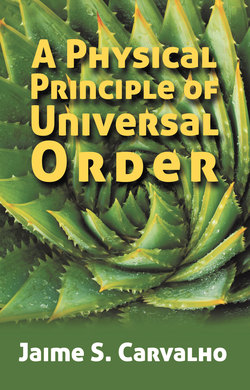Читать книгу A Physical Principle of Universal Order - Jaime S. Carvalho - Страница 10
На сайте Литреса книга снята с продажи.
Order and disorder
ОглавлениеBesides his idea on the energetics of evolution, Ludwig Boltzmann also had his own interpretation of the second law of thermodynamics. For him, entropy was disorder. But how can entropy, a degraded form of energy, be conceived as disorder?
During development of thermodynamic theory, it was explicitly recognized that the kinetic energy of the random motion of molecules in a gas was thermal energy. By modelling gas molecules as colliding billiard balls in a box, Boltzmann noted that with each collision, groups of molecules moving at the same speed and in the same direction became increasingly disordered, leading to a final state of macroscopic uniformity and maximum microscopic disorder or maximal entropy. Heat was considered to be a disordered form of energy, or entropy.
Since gases consist of a very large number of molecules in rapid motion, the velocity of each molecule can only be measured in a purely statistical sense. Gas properties, particularly when in thermal equilibrium, must be characterized in terms of probabilities of various molecular states. The entropy law is simply the result of the fact that in a medium of mechanically colliding particles, disordered states are the most probable. The measurement of the "heat" of a given gas is nothing more than a statistical measurement of the motions (collisions) of the individual particles that make up the gas. This was Boltzmann’s statistical interpretation of the second law of thermodynamics.
The concept of entropy, therefore, only applies to statistical systems with a very large number of entities in a state of disorder. In other words, it applies only where molecular structure or molecular patterns can be neglected. In a fundamental analysis, it never applies exactly to the real world, a world of formative processes in which order increases.
In simplifying terms, thermodynamics considers energy as disembodied from matter–energy flows. And in complex systems, it is from the flow of energy all the way to heat that order is extracted. Being the science of heat, thermodynamics emphasizes disordered processes. Ordered processes—the negative-entropy concept of Heisenberg—were taken to be secondary and were relatively neglected.
Unitary theory sees things differently. There is no energy disembodied from matter. Energy is embodied in structure, which is considered to be a system of relations, all asymmetrical, and constantly changing to more symmetrical forms. Under this conception, order comes from this process of continuous change. Symmetry (the unitary equivalent of heat, so to speak) is not considered to be disorder but a special form of order. When symmetrical form is achieved, structure becomes stable and it is in this stable form that structure can be observed. Contrary to classical thermodynamics, the new unitary theory emphasizes ordered processes.
But the existence of a universal order does not assure the permanence of harmony. There is also disorder in our world. Our fate is unknown. Car accidents happen at every minute, new wars pop up almost every week, tornados and hurricanes are common. In effect, the world we inhabit appears more one of disorder than one of order. How does unitary science explain this apparent contradiction?
The unitary theory only asserts that there is an orderly tendency in our universe; it does not exclude the existence of disorder, which is evident in our daily lives. But this mixture of order and disorder is not interpreted as the opposition of two principles, the common view in Greek philosophy. Rather, general order and local disorder coexist in nature. This local disorder is no more than what we call circumstance or chance. And we cannot escape from its inexorable grip. Circumstance, however, is not necessarily wholly evil.
In the unitary view, there is only one general tendency in the universe—tendency of structure to symmetry or order. And it is from this single orderly tendency that all existent stable structures—all the variety of species on earth—were formed. Nature could not be more economical. But in the absence of the insight provided by unitary science, this profound economy or conservatism of nature was interpreted by classical science as conservation of matter and energy.
Contrary to tendency, circumstance is unpredictable, random, and arbitrary. It bears no necessary relation to the system whose fate it determines. And it presents itself in various degrees of intensity. When too severe, the clash between chance and the existent order may be destructive—and disorder occurs. But when less severe, circumstance may not destroy a system but simply modifies it. And when tendency and circumstance work in balance, they are the source of novelty. The novel forms maintain the same orderly tendency in a new structural pattern.
